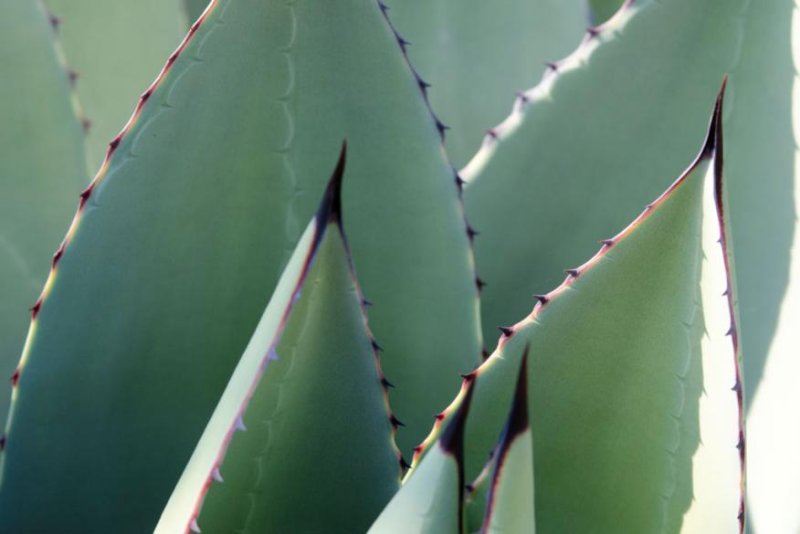Agave plants are found in arid regions in the American Southwest and Mexico. Scientists believe their genetic secrets can help researchers engineer drought-resistant crops. Photo by Newcastle University
NEWCASTLE, England, Dec. 6 (UPI) -- Scientists have identified genes key to the ability of the agave plant -- the plant used to make tequila -- to survive hot, dry conditions. The discovery could inspire the engineering of drought-resistant plants.
Unlike most plants, which keep their stomata open during the day, agave and other Crassulacean Acid Metabolism plants, or CAM plants, have reversed their molecular clocks and open their stomata at night. Stomata are the pores in plant leaves that control gas exchange.
"Photosynthesis needs three key ingredients -- CO2, water and sunlight -- so it follows that most plants keep their stomata open in the day when it is sunny and shut at night when it is dark," Anne Borland, a professor of plant physiology at Newcastle University, said in a news release. "But for a plant living in hot, arid conditions such as the Agave, this would be disastrous. They need to conserve every drop of water they can and leaving their stomata open during the day would result in such rapid water loss they would simply die."
In CAM plants, stomata-controlling genes are more active at night. The CO2 absorbed at night can be stored and used for photosynthesis during the day, without risking dehydration.
"If we can harness these genes and engineer new drought-resistant plants then the potential is huge in terms of developing crops and biofuels that are able to withstand the challenges we face from a changing climate," Borland said.
In recent experiments, researchers compared the stomata genes of agave plants with those of a plant that employs traditional carbon fixation, the metabolic pathway known as C3. Despite a similar array of genes and proteins, the two plants switched on key genetic pathways at different times.
Scientists believe further exploration of the molecular triggers in CAM and C3 plants will allow them to genetically engineer plants with improved drought-resistance capabilities.
"Because both plant types have a similar genetic makeup, we are hopeful that it will be possible to turn C3 plants into CAM plants simply by finding the right triggers," said Borland. "This is a really exciting discovery and a major breakthrough in our quest to create new plants that can cope in our future environment."
The new research was published in the journal Nature Plants.















